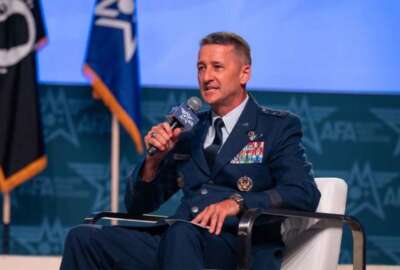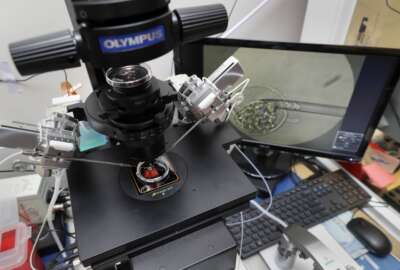The Air Force has been on an aggressive modernization journey for much of the past two years. The service has aligned its funding, its policies, its strategy and its people to dramatically change the way it gets out from under legacy systems and continues to have the best technology for its airmen and women and civilian employees.
This transformation effort includes a host of initiatives from enterprise IT-as-a-service to workforce training to the use of zero trust principles and identity and access management to secure data.
Lauren Knausenberger, the deputy chief information officer of the Air Force, said each of these initiatives are moving the service forward and toward a better future, but it was the coronavirus pandemic that in many ways added fuel to the fire.
“A lot of our airmen in the field know things are broken and are trying to do things on the move. A lot of us back in the Pentagon, we have [IT] teams. We have devices that work. If a senior ranking official says something is wrong, it gets fixed fast,” Knausenberger said on the Modern Government: How COVID-19 Changed the Course of Digital Transformation show sponsored by KPMG. “But we have to make it equal to everyone and the coronavirus made it equal for everyone. Everyone was at home trying to figure out how to make this work. Everyone realized that those airmen who have been saying for years that it really stinks was an understatement when we are not in the building trying to do our job.”
Knausenberger said a perfect example of making it equal was in connecting to the network through a virtual private network (VPN). She said the Air Force went from 7,000 people a day to having to support upwards of 650,000 people a day.
“We were not poised for telework, but we had incredible team. We told the IT team this is your time on the front lines, you have to get everyone up fast, act like you have money. Those guys went out and got us up to 400,000 VPN connections. They got us down from 40 hops to send an email, which is ridiculous, to 8 hops so you can send emails so much faster than we used to. They cut through some of the legacy because we said this is your mission, go do it and we will fund you right now,” she said. “That level of focus and that level of culture change I don’t think anything would have done this for us short of a war. COVID is the crisis that we need to drive forward the digital transformation and we are trying not to let the crisis go to waste.”
Going forward, Knausenberger said her priorities include continuing to build the digital foundation that things like Cloud One, Platform One and artificial intelligence can rely on. She said the Air Force also is testing a zero trust architecture, investing in Digital University, where 9,000 airmen are enrolled to gain the IT skillsets needed in a digital Air Force, and is ruthlessly attacking manual processes and policies, anything in their way of going fast and costing them money.
“We are launching operation flamethrower. We are burning these things with fire and they have no place in our Air Force anymore,” she said. “One of the big things we just kicked off is robotics process automation. We had our digital wingman challenge in the spring where airmen came up with some incredible ideas. We had folks automating their executive functions where they had to go to multipole databases and put them in PowerPoint. They are completely automating that. Any type of standard report, they are automating that. Sometimes when they have to reenter things in multiple systems, they are automating that too. With that, I’m looking forward to in the short term really enabling more airmen. We’ve invested more in RPA. Even more exiting, we will be able to use the data to see exactly how much time we are wasting with crazy process and crazy software. That will help us focus our spend on what parts of the software apparatus we need to fix permanently.”
Current Air Force Modernization Efforts
[The IT team] got us down from 40 hops to send an email, which is ridiculous, to 8 hops so you can send emails so much faster than we used to. They cut through some of the legacy because we said this is your mission, go do it and we will fund you right now. That level of focus and that level of culture change I don’t think anything would have done this for us short of a war.
Lauren Knausenberger
Deputy Chief Information Officer, Air Force
2021 Goals and Initiatives
We are going to ruthlessly attack manual processes, policies or hardware, anything that is in our way of going fast, especially if it’s in our way of going fast and especially if it is costing us money and slowing us down. We are launching operation flamethrower. We are burning these things with fire and they have no place in our Air Force anymore. One of the big things we just kicked off is robotics process automation.
Lauren Knausenberger
Deputy Chief Information Officer, Air Force
Listen to the full show:
Copyright
© 2024 Federal News Network. All rights reserved. This website is not intended for users located within the European Economic Area.








